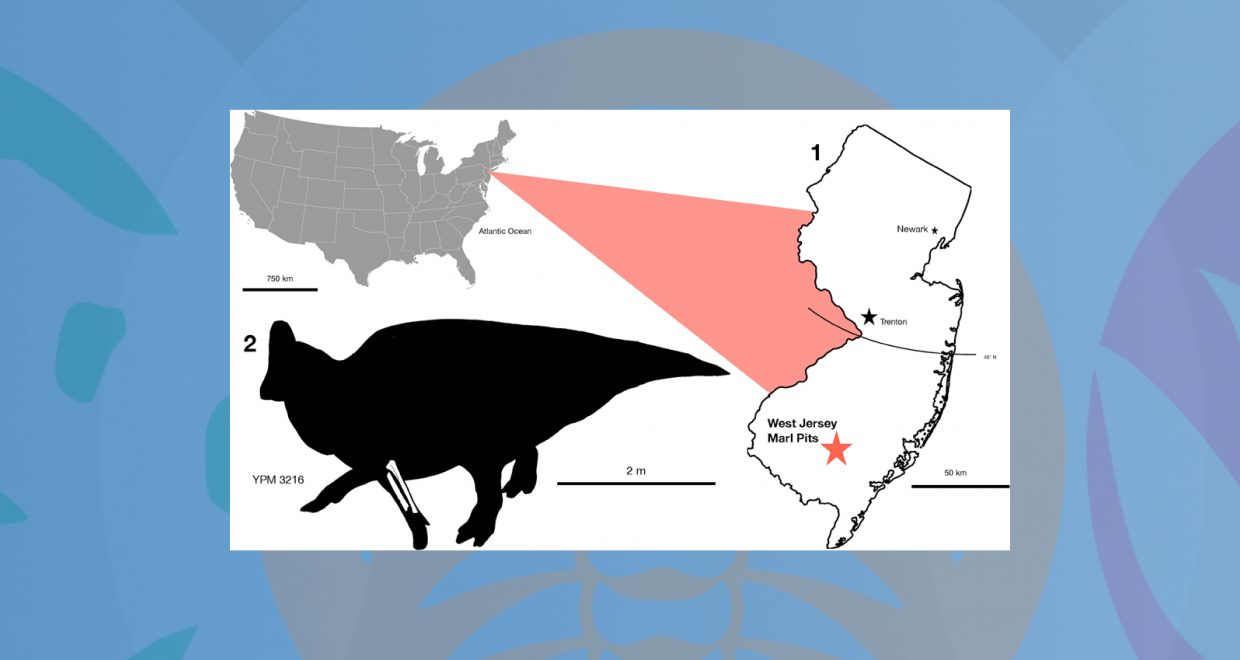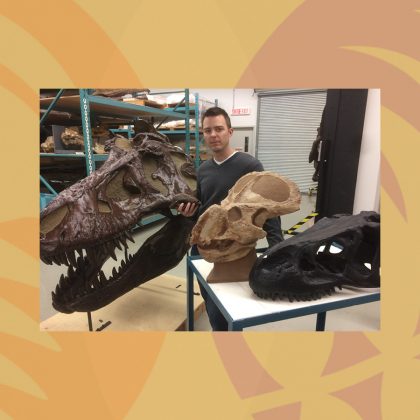An elongate hadrosaurid forelimb with biological traces informs the biogeography of the Lambeosaurinae
For about thirty million years in the Late Cretaceous, a shallow salty seaway flooded the interior of North America. This separated eastern and western North America into different landmasses. In the west, a long, skinny landmasses called Laramidia provided ample habitat for iconic dinosaur groups like the tyrannosaurs and ceratopsids. The dinosaur fauna of the eastern landmass, Appalachia, is far more obscure, but new work on old specimens is bettering our understanding of these animals.
In recent years, one of the issues I have gotten particularly interested in while studying Appalachian dinosaurs is how eastern and western faunas interacted after the shallow seaway regressed out of the interior of North America just before the asteroid impact. One historically collected site, the former location of a marl mining company in Barnsboro, New Jersey, preserved several fragmentary and partial skeletons of dinosaurs that lived along the Atlantic coastline just before the extinction when these interactions would have occurred.
Many dinosaur skeletons recovered from the Barnsboro site have sat undescribed in museum collections for more than a century. These include the bones of small herbivorous dinosaurs, some of which may be juveniles.
One specimen, the partial forelimb of a large herbivorous dinosaur housed in Yale’s Peabody Museum, is especially intriguing. The forelimb bears a resemblance to those of crested lambeosaurine dinosaurs, which are well-known from the American west. If the forelimb belonged to a lambeosaurine, it would represent one of a handful of potential records of this group in eastern North America and could indicate lambeosaurines moved eastward after the seaway closed.
To provide the first comprehensive description and assessment of this forelimb, I teamed up with my friend Immanuel Bissell, a fellow undergraduate at Yale University studying geology. In our new paper in the Journal of Paleontology, we demonstrate that, like other dinosaur bones from the Barnsboro site, the forelimb shows evidence of deposition at sea. Shark feeding traces line the more complete bone in the set, demonstrating that the specimen was probably scavenged before drifting to the floor of the Atlantic.
We also found that, although the forelimb is more similar to those of lambeosaurines than those of related large herbivorous dinosaur groups, it is too incomplete to be confidently assigned to a lambeosaurine dinosaur. Discussions about the geographic distribution of lambeosaurines will need to wait for future discoveries to better elucidate putative eastern North American records.
“An elongate hadrosaurid forelimb with biological traces informs the biogeography of the Lambeosaurinae” by Chase Doran Brownstein and Immanuel Bissell has been published in Journal of Paleontology, published by Cambridge University Press on behalf of the Paleontological Society. The article has been made freely available for a limited time.
Read other blog posts from Journal of Paleontology here
or view all blog posts from the Paleontological Society Journals






